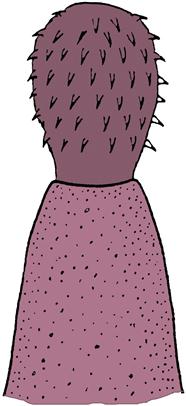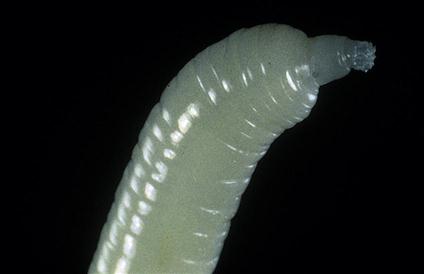The Phylum Acanthocephala
Learning Objectives
After studying this chapter, the reader should be able to do the following:
Key Terms
Acanthocephalan
Spiny proboscis
Tegument
Acanthor
Acanthella
Cystacanth
The phylum Acanthocephala consists of the “thorny-headed worms,” or “spiny-headed worms.” With regard to number of acanthocephalan parasites that infect domesticated animals, the phylum Acanthocephala is very small.
Common Acanthocephalans
Most acanthocephalans are parasites of marine and freshwater fish and aquatic birds; their predilection site is within the small intestine of the definitive host. Only two species, Macracanthorhynchus hirudinaceus, the thorny-headed worm of swine, and Oncicola canis, the canine acanthocephalan, are important to veterinary medicine.
Key Morphologic Features
Members of the phylum Acanthocephala are important parasites of domesticated and wild animals. Adult acanthocephalans are internal parasites, living in the small intestine of their vertebrate hosts. Acanthocephalans are typically elongate, cylindric worms, tapering on both ends. One acanthocephalan (M. hirudinaceus) can measure up to 70 cm in length. Acanthocephalans are dioecious; that is, they have separate sexes. Female acanthocephalans are typically larger than their male counterparts. The colloquial names “thorny-headed worm” and “spiny-headed worm” are derived from the fact that acanthocephalans possess a retractable proboscis, or “nose,” on the anterior end (Figure 9-1). This proboscis is covered with tiny, backward-facing spines and serves as an organ of attachment (Figure 9-2). The proboscis embeds in the small intestinal mucosa and allows the acanthocephalan parasite to attach to the host, similar to the scolex of the true tapeworm. It is in this enteric site that acanthocephalans feed; however, these are unusual parasites in that they lack a mouth. Instead, these strange-looking helminths have a trait that is similar to the tapeworms: they do not possess an alimentary tract (a gut or intestinal tract). As a result, acanthocephalans must absorb nutrients through their body surface, or tegument
Another important organ system in the acanthocephalan is the reproductive tract. As with all helminths, acanthocephalans have a tremendous reproductive potential—one adult female worm can produce in excess of a quarter of a million eggs per day! These eggs pass out of the definitive host within its feces and embryonate in the external environment.
Life Cycle of the Thorny-Headed Worm
The typical acanthocephalan has a unique life cycle. Because adult acanthocephalans are found attached to the small intestinal mucosa, the eggs are voided in the feces of the definitive host. The egg is spindle-shaped and has a shell of three layers (Figure 9-3). This egg contains the larval acanthocephalan, or acanthor. The intermediate host, usually some type of arthropod (e.g., dung beetle), ingests the egg, and the acanthor larva hatches in that intermediate host. Within the intermediate host, the larva develops to the next stage, the acanthella. The acanthella develops into the cystacanth stage, which has an inverted proboscis. The definitive host ingests the arthropod intermediate host. Within the intestine of the definitive host, the acanthella everts its proboscis and attaches to the wall of the small intestine. This juvenile acanthocephalan grows to the adult stage, and the life cycle begins again (Figure 9-4).
Stay updated, free articles. Join our Telegram channel

Full access? Get Clinical Tree




